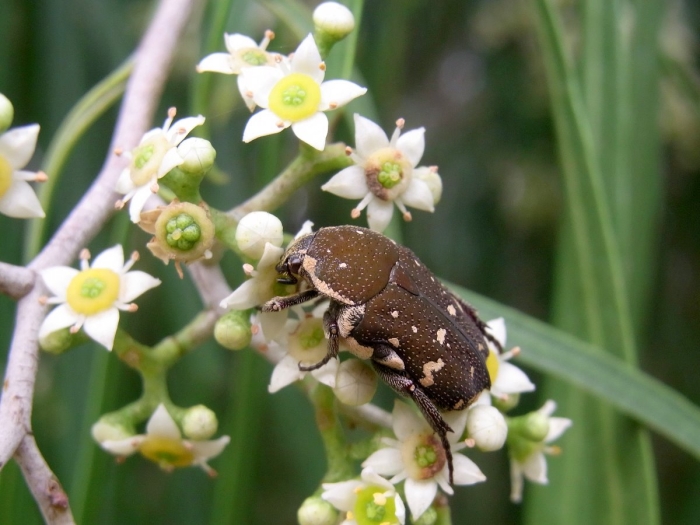Wilga
(Geijera parviflora)
Wilga (Geijera parviflora)
/
/

Poyt448 Peter Woodard
CC0
Image By:
Poyt448 Peter Woodard
Recorded By:
Copyright:
CC0
Copyright Notice:
Photo by: Poyt448 Peter Woodard | License Type: CC0 | License URL: http://creativecommons.org/publicdomain/zero/1.0/deed.en | Uploader: Poyt448 | Publisher: Wikimedia Commons | Title: Wilga-Havilah4.JPG | Notes: {{Information |Description=Photograph of the {{MultiLink|Bottle Gentian}} ({{BioLinkSpecies|Gentiana clausa}}). Photo taken [[:en:Mt. Cuba Center|Mt. Cuba Center]] where it was identified.{{Ram-Man Camera 1 | camera = Nikon D50 | lens = Sigma | fo |







































Estimated Native Range
Summary
Geijera parviflora, commonly known as Wilga, is an evergreen tree or large shrub native to the dry inland regions and open woodlands of Australia. It typically grows to a height of 8–10 m (26–33 ft) with drooping branches and narrow lance-shaped leaves that can reach ground level, although these are often grazed by livestock. The foliage emits a strong, citrus-like fragrance when crushed. Wilga produces small, white, and sometimes foetid or citrus-scented flowers in loose panicles, attracting various insects, and spherical fruit containing a shiny black seed. Flowering occurs from June to November, contributing to its ornamental value.
Wilga is valued for its drought tolerance, pleasant aroma, and graceful weeping form, making it suitable for use as a feature tree in xeriscaping and water-wise gardens. It is also planted for its ability to provide shade and as a windbreak in rural landscapes. While it prefers full sun, Wilga can endure light frost and is adaptable to a range of soil types, provided they offer good drainage. Cultivation from seed can be challenging due to the hard seed coat; thus, scarification is recommended to improve germination rates. Despite its slow growth, it is a low-maintenance plant once established.CC BY-SA 4.0
Wilga is valued for its drought tolerance, pleasant aroma, and graceful weeping form, making it suitable for use as a feature tree in xeriscaping and water-wise gardens. It is also planted for its ability to provide shade and as a windbreak in rural landscapes. While it prefers full sun, Wilga can endure light frost and is adaptable to a range of soil types, provided they offer good drainage. Cultivation from seed can be challenging due to the hard seed coat; thus, scarification is recommended to improve germination rates. Despite its slow growth, it is a low-maintenance plant once established.CC BY-SA 4.0
Plant Description
- Plant Type: Tree
- Height: 30-35 feet
- Width: 10-20 feet
- Growth Rate: Rapid
- Flower Color: N/A
- Flowering Season: Fall, Spring
- Leaf Retention: Evergreen
Growth Requirements
- Sun: Full Sun
- Water: Medium
- Drainage: Slow, Medium, Fast
Common Uses
Drought Tolerant, Low Maintenance, Street Planting
Natural Habitat
Native to dry inland regions and open woodlands of Australia
Other Names
Common Names: Australian Willow, Native Willow
Scientific Names: , Geijera parviflora, Geijera salicifolia, Geijera pendula, Zanthoxylum australasicum,
GBIF Accepted Name: Geijera parviflora Lindl.